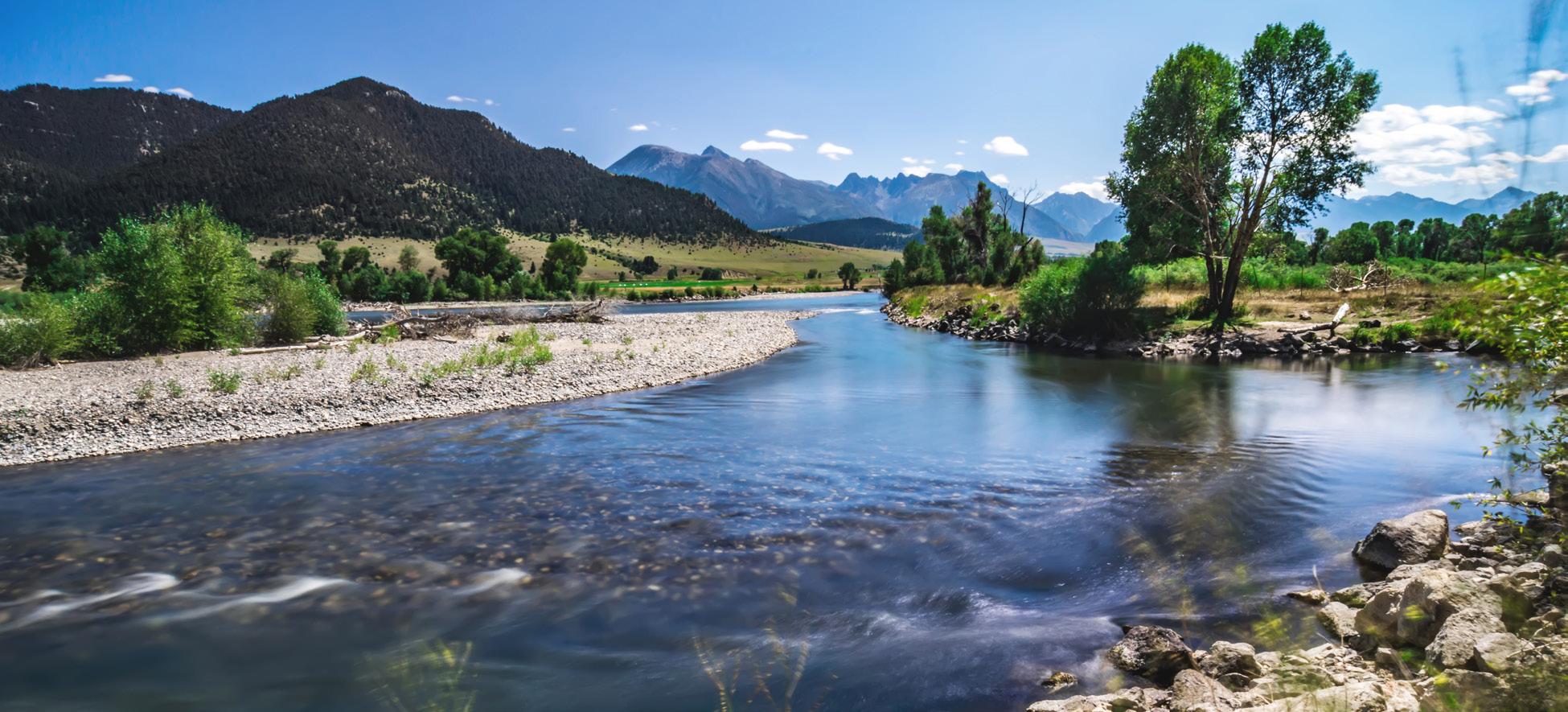
4 minute read
The Benefits of CONSERVATION EASEMENTS...
By Eddie Thomas, REALTOR® at Clearwater Properties
...for Owners of Recreational Properties, Farms, or Ranches
For many owners, the land is more than just an asset; it’s a legacy. Conservation easements allow for the preservation of the land’s natural state, ensuring that its unique features, whether they be wildlife habitats, scenic views, agricultural use, or recreational spaces, are protected indefinitely. This means that the landowner can guarantee that the property’s ecological or agricultural value will be maintained, aligning with their conservation goals and values.
Conservation easements offer a strategic approach for owners of recreational properties, farms, and ranches to preserve their land’s natural beauty and ecological value while also obtaining significant financial and operational advantages. These legal agreements between a landowner and a Land Trust or government agency provide a way to protect land for future generations.
By limiting certain types of development, conservation easements can ensure the long-term financial viability of farms and ranches. For example, by preserving the land for agriculture, easements can protect against the pressures of development and increasing land prices, helping to keep the land in production and sustainably managed. Furthermore, while conservation easements restrict certain uses, they typically allow for the continued traditional use of the land, such as farming, ranching, and recreation, providing operational flexibility for the landowner. In many cases, placing a property under a conservation easement can even enhance its value to certain buyers. Properties preserved for their natural beauty, wildlife habitat, or recreational opportunities can be highly desirable in the real estate market. Additionally, the assurance that the land will remain protected in perpetuity can be a significant selling point.
These benefits become especially impactful when neighboring landowners have conservation easements in place as well and as a collective become what is known as
Conservation easements allow for the preservation of the land‘s natural state conservation blocks. This also applies when private lands with conservation easements adjoin existing public lands such as State and National Parks, Forests, or Wilderness Areas already under federal or state protection. Additionally, the carbon market is emerging as an increasingly valuable tool for landowners to add financial viability to their land by selling their carbon offsets. More and more resources are becoming available for landowners in this regard. Finally, and one of the most compelling reasons for landowners to enter into a conservation easement is the potential for personal tax benefits. These can come in various forms, including income tax deductions, property tax reductions, and estate tax benefits. The income tax deduction is based on the difference in the land’s value before and after the easement is placed, recognizing the value associated with the limitation on development rights as a charitable donation. For properties passed on to heirs, conservation easements can also significantly reduce estate taxes, making it easier for families to keep the land intact through generations. A qualified CPA with knowledge of conservation easements can help you better assess the benefits as they relate to your particular financial situation. For owners of recreational properties, farms, or ranches, conservation easements represent a powerful tool for preserving the ecological and aesthetic values of their land while reaping significant financial and operational benefits. By entering into a conservation easement, landowners can ensure their land remains a part of their legacy, contributing to environmental conservation and community well-being for generations to come.
If you would like more information about conservation easements for land you already own or are interested in purchasing a property with the idea of conservation in mind, please contact your local Land Trust and/or the author for more information.






